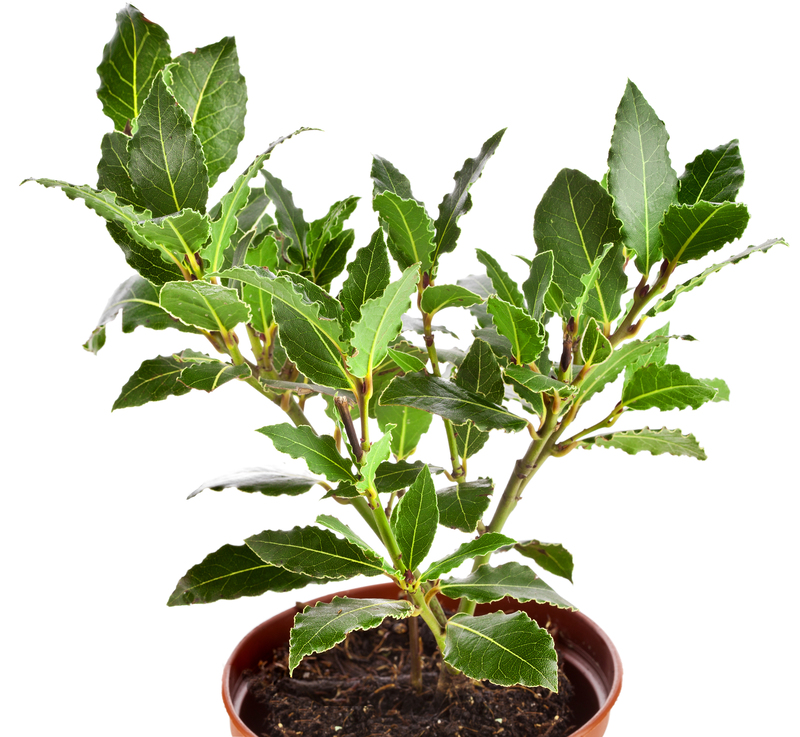The Ultimate Guide to Kid-Friendly Gardening
Posted on 17/08/2025
The Ultimate Guide to Kid-Friendly Gardening
Gardening is a joyful, enriching activity with benefits for all ages. When children get involved, the rewards multiply, bringing learning, creativity, and nature closer to young minds. Kid-friendly gardening is about more than just dirt and seeds--it's about sparking curiosity, encouraging responsibility, and creating lasting memories together. Whether you're a seasoned green thumb or a gardening newbie, this guide provides you with everything you need to transform your space into a garden your kids will love.
Why Involve Kids in Gardening?
Gardening with children is not just fun, but highly educational. Child-friendly gardening can foster a love of the environment, help kids develop essential life skills, and encourage them to try new fruits and vegetables.
Key Benefits of Gardening for Children
- Promotes Healthy Eating: Children are more likely to eat produce they've helped grow.
- Encourages Physical Activity: Planting, digging, and watering are great ways to get kids moving.
- Supports Learning: Teaches science, math, responsibility, and patience.
- Boosts Mental Health: Gardening helps reduce stress and encourages mindfulness.
- Builds Family Bonds: Working together in the garden creates cherished shared experiences.

Getting Started: Planning a Kid-Friendly Garden
Choose the Right Location
The first step in garden planning for children is picking a spot. Look for a safe, sunny, and accessible area. Raised beds, container gardens, or even a small patch of backyard can make all the difference, especially for little hands.
- Ensure safety: Avoid areas near busy roads, pools, or thorny plants.
- Easy access: Keep the garden close to the house for frequent visits and easy management.
- Modify height: Consider raised beds or table-top planting stations so children can easily reach.
Selecting Kid-Friendly Plants
Not all plants are created equal in the eyes of a child. Opt for fast-growing varieties, plants with interesting textures or colors, and those that produce edible yields.
- Snap Peas: Easy, sweet, and quick-growing.
- Sunflowers: Tall, dramatic, and rewarding.
- Pumpkins: Fun to plant and harvest!
- Strawberries: Who doesn't love picking fresh berries?
- Basil and Mint: Fragrant, easy, and useful in the kitchen.
- Radishes: Very fast-growing--visible rewards in as little as three weeks.
- Marigolds: Bright, tough flowers that also repel some pests.
Safe Gardening Tools for Children
Equipping your young gardeners with the right gear makes the experience more enjoyable and safe.
- Child-sized gloves: Protect little hands from dirt and minor scrapes.
- Plastic or rounded-edge tools: Safer alternatives for rakes, spades, and trowels.
- Easy-to-carry watering cans: Lightweight and fun for all ages.
- Colorful buckets: Great for collecting harvests or moving soil.
How to Make Gardening Engaging for Kids
A fun gardening experience for children relies on keeping things interesting and hands-on. Here are some creative ways to ensure your youngsters are enthusiastic about tending their plants:
Let Them Choose
Kids thrive when they feel ownership over their projects. Visit a garden center together and let your child pick seeds or seedlings. Even better, designate a 'kid zone' in your garden for their experiments!
Create Themed Gardens
- Pizza Garden: Plant tomatoes, peppers, oregano, and basil--everything needed for pizza night!
- Rainbow Garden: Choose flowers and veggies of different colors (red tomatoes, orange carrots, yellow squash, etc.).
- Pollinator Paradise: Focus on flowers that attract bees and butterflies like lavender and alyssum.
- Miniature Fairy Gardens: Add tiny houses, pebbles, and mushrooms for an imaginative twist.
Integrate Art and Creativity
Stretch your children's creativity by making garden markers, painting plant pots, or creating decorative stepping stones. These crafts are not only fun but provide practical function in the garden.
Track Growth and Progress
Introduce children to science and observation by tracking their plants' growth via simple charts or a garden journal. Encourage them to draw pictures, measure stem heights, and note blooming dates.
Teaching Kids Gardening Skills
With your guidance, children will gradually learn gardening basics, setting a foundation for a lifelong appreciation for nature.
- Planting Seeds: Show how deep and far apart to sow seeds for best results.
- Watering Wisely: Explain why overwatering can harm plants, and teach them to check soil moisture first.
- Weeding: Help them identify unwanted plants, and safely remove them by hand.
- Harvesting: Demonstrate how to pick fruits and vegetables without damaging the plant.
- Composting: Get children involved with compost to learn about recycling and soil health.
Fun Garden Projects for Children
Simple DIY Garden Projects
- Egg Carton Seed Starters: Sprout seeds indoors using egg cartons filled with soil.
- Tin Can Herb Planters: Recycle cans and paint them for growing herbs on a windowsill.
- Bug Hotels: Stack twigs, pinecones, and leaves in a small crate to attract beneficial insects.
- Mud Kitchens: Let kids play chef outdoors using soil, water, and discarded kitchen utensils.
- Bird Feeders: Create hanging feeders with pine cones, peanut butter, and birdseed.
Host a Garden Scavenger Hunt
Turn gardening into an adventure by organizing a scavenger hunt. Challenge children to find things like a ladybug, a red flower, a wiggly worm, or a plant taller than them.
Teaching Responsibility Through Gardening
Gardening for children is an excellent way to introduce the concept of responsibility. Assign regular garden tasks--watering, weeding, feeding plants, or checking bug traps. Collectively celebrate the results of their care, whether it's a new bloom or a bumper vegetable crop!
Ensuring Safety in the Kid's Garden
Safety is a top priority in child-friendly gardening. Here are some vital precautions:
- Avoid Using Pesticides: Stick to natural methods of pest control, such as companion planting or hand-picking bugs.
- Supervise Tool Use: Only allow age-appropriate tools and activities, especially with sharp or heavy objects.
- Choose Non-Toxic Plants: Steer clear of plants that could be harmful if touched or eaten. Examples include foxglove, oleander, and nightshade.
- Teach Sun Safety: Make sure your children wear hats, apply sunscreen, and take breaks in the shade.
- Stay Hydrated: Keep water bottles handy for everyone working in the garden.
Gardening Activities for All Seasons
Spring:
- Seed Starting: Get a jumpstart by growing plants indoors.
- Composting: Teach how to recycle kitchen scraps for healthy soil.
Summer:
- Harvesting Crops: Pick and taste summer vegetables.
- Making Sun Prints: Use leaves and flowers to create artistic sunprints on paper.
Autumn:
- Planting Bulbs: Prepare spring flowers by planting bulbs together.
- Leaf Crafts: Collect colorful leaves for collages or rubbings.
Winter:
- Grow Microgreens Indoors: Use recycled containers for healthy greens.
- Plan Next Year's Garden: Browse seed catalogs and draw out garden plans.
Turning Gardening Into a Lifelong Passion
By introducing your child to the wonders of planting and nurturing living things, you're sowing the seeds of a lifelong connection to nature. Gardening for kids unlocks curiosity, responsibility, and creativity--all while offering fresh air, exercise, and healthy food. Make it a habit to garden together, and watch your family blossom, season after season.

Frequently Asked Questions About Kid-Friendly Gardening
What age is best to start gardening with kids?
Even toddlers can get involved by helping to water plants or dig in the dirt. As children grow, introduce more complex tasks suited to their age and abilities.
How do I keep my child interested in gardening?
Keep activities short and varied, celebrate small achievements, and choose fast-growing plants so children can see quick results.
What if we don't have a yard?
Use containers on a balcony, windowsill, or porch. Many vegetables, herbs, and even small fruits can thrive in pots.
Are there any plants I should avoid?
Yes, always research before planting. Avoid any toxic or spiny plants, and stick to edible, non-toxic varieties for peace of mind.
Conclusion: Growing More Than Just Plants
A kid-friendly garden is an ever-evolving classroom, playground, and sanctuary. By welcoming your children into the world of gardening, you're cultivating more than just beautiful blooms or tasty veggies--you're nurturing curiosity, resilience, and joy. So grab your tools, pick out your seeds, and start growing together today!

